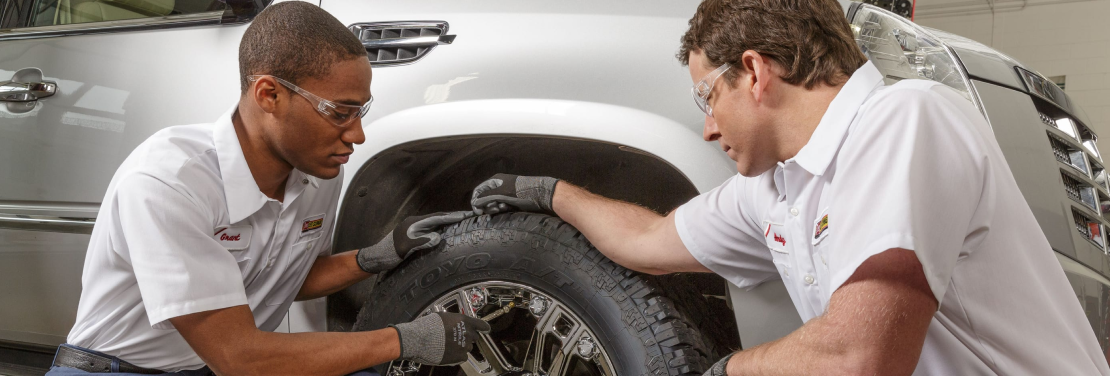Tire Service: The Effect of Weather Problems
When it comes to making sure optimum performance and security on the roadway, understanding the effect of climate conditions on tire service is critical. From scorching heat to icy roads, each weather condition component can significantly influence tire performance and total driving experience. By diving into the effects of varying climate conditions on tires, vehicle drivers can gain important insights that may improve their lorry's efficiency and longevity. In this discussion, we will explore the elaborate connection between climate condition and tire solution, clarifying the relevance of weather-specific tire upkeep techniques and factors to consider.
Heat and Tire Efficiency
When revealed to heats, tires experience adjustments in efficiency that can dramatically influence automobile security and handling. The heat generated from long term driving or warm weather condition conditions causes the tire rubber to soften, leading to lowered walk life and enhanced wear. As the rubber becomes softer, the tire's grasp on the roadway decreases, affecting stopping distances and overall grip. In extreme cases, too much warm can also trigger tire blowouts, positioning a severe safety and security danger to the vehicle and its owners.
In addition, high temperatures can speed up the process of tire aging, triggering the rubber to deteriorate a lot more promptly. To reduce the results of warmth on tire efficiency, drivers ought to consistently examine their tire pressure, rotate tires to guarantee even use, and examine for any type of indications of damages.
Winter Results
Cold climate conditions can have a significant impact on tire efficiency and security. In cold climate, tires might also shed air stress much more rapidly, which can influence managing and fuel performance.
To alleviate the impacts of cold climate on tires, it is important to on a regular basis inspect tire stress and inflate them to the producer's recommended degrees. Utilizing winter season or all-season tires designed for winter problems can likewise boost traction and grip on icy or snowy roads - tires morris il. Proper tire upkeep, including routine evaluations for wear and damages, becomes much more essential during cooler months to ensure ideal efficiency and security
Rainy Issues Impact
Throughout wet conditions, tire performance and safety can be significantly influenced by the damp roadway surface areas and minimized exposure. The tread pattern of tires plays an essential role in maintaining grip on damp roads. Tires with worn-out footsteps are extra susceptible to hydroplaning, where a layer of water develops between the roadway and the tire surface area, resulting in loss of traction. To battle this, motorists need to on a regular basis check their tires for sufficient tread deepness and think about investing in tires especially created for wet problems.

Snow and Tire Safety
Snow-covered roadways posture distinct obstacles for drivers, highlighting the relevance of proper tire choice and upkeep. When driving in snowy conditions, having the best tires can make a substantial difference in safety and performance. Winter months tires are designed with special rubber compounds and walk patterns to give better traction on snow and ice compared to all-season tires. The much deeper footsteps and sipes of winter months tires help grip the road much better, lowering the threat of slipping and sliding.
Along with making use of winter months tires, it is crucial to guarantee they are effectively blown up. Winter can discount tires morris il create tire stress to go down, affecting traction and handling (morris tire and alignment). Consistently examining and keeping the right tire stress is necessary for ideal performance in snowy conditions

Weather-Related Tire Maintenance
When encountered with various weather, proper tire maintenance comes to be an important facet of vehicle security and efficiency. Weather-related tire maintenance incorporates a variety of practices focused on making visit the site certain optimal tire feature and long life in different weather condition circumstances. One key element of weather-related tire upkeep is tire stress regulation. Varying temperatures can cause tire pressure to vary, affecting grip and gas efficiency. Frequently adjusting and inspecting tire pressure according to maker referrals is essential for safe driving in altering climate condition. Furthermore, tire step deepness plays a substantial duty in handling various weather elements. Tires with adequate tread depth provide better grip on wet or icy roads, reducing the risk of skidding or hydroplaning. When step wear gets to a specific depth is vital more for maintaining grip and security in unfavorable weather, inspecting tire step consistently and changing tires. By prioritizing weather-related tire maintenance, drivers can boost security, improve vehicle efficiency, and extend the lifespan of their tires.
Verdict
Finally, climate condition have a significant effect on tire performance and security. From warmth impacting tire stress and use to winter lowering traction, it is necessary to consider the weather condition when maintaining and utilizing tires. Stormy conditions can reduce grasp and result in hydroplaning, while snow can raise the risk of mishaps if tires are not properly geared up. Weather-related tire upkeep is crucial in making sure optimum performance and security when driving.
In this conversation, we will certainly discover the detailed partnership in between weather conditions and tire service, shedding light on the importance of weather-specific tire maintenance practices and considerations.

Comments on “Costs Tires Morris IL: High Quality Products for All Makes and Designs”